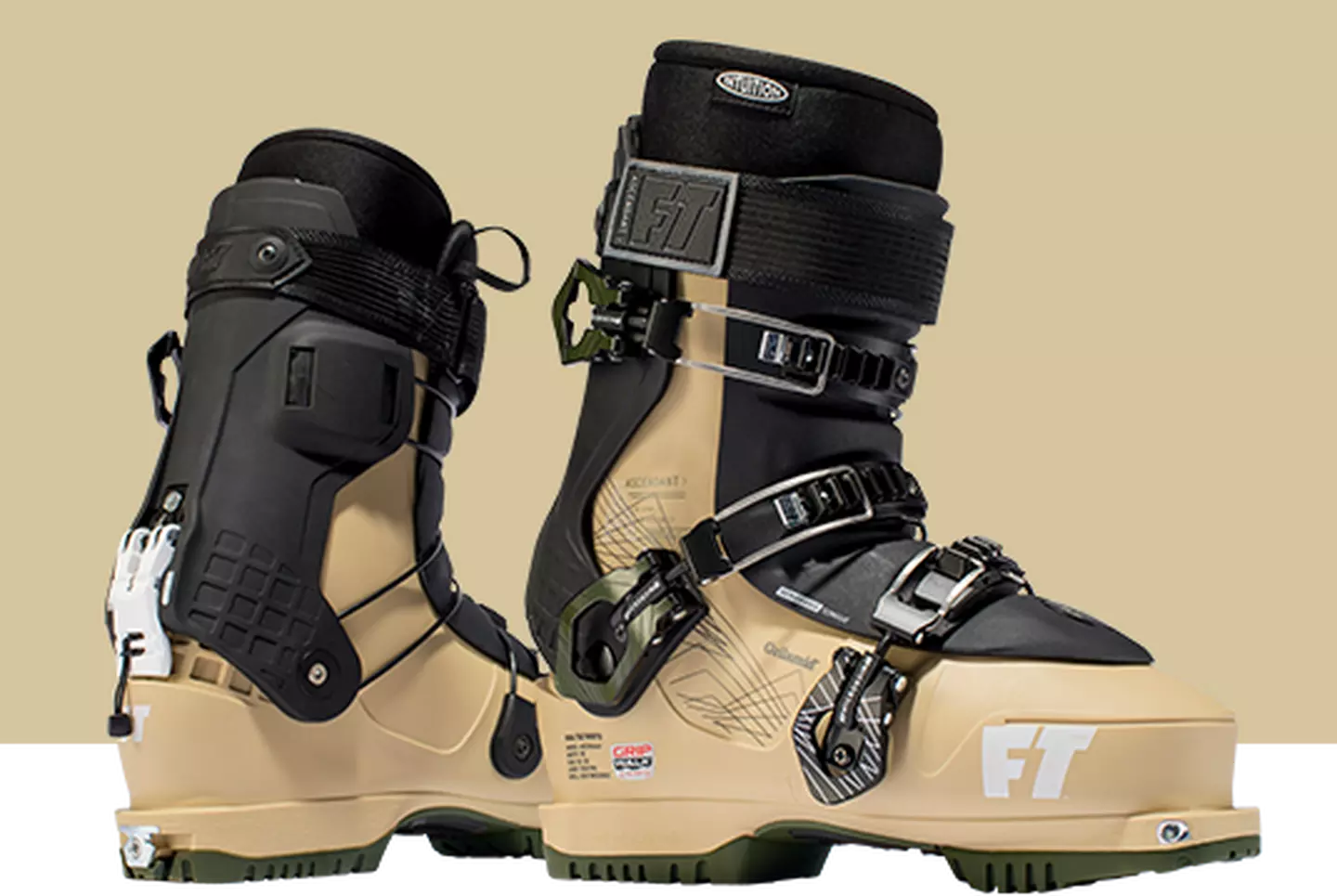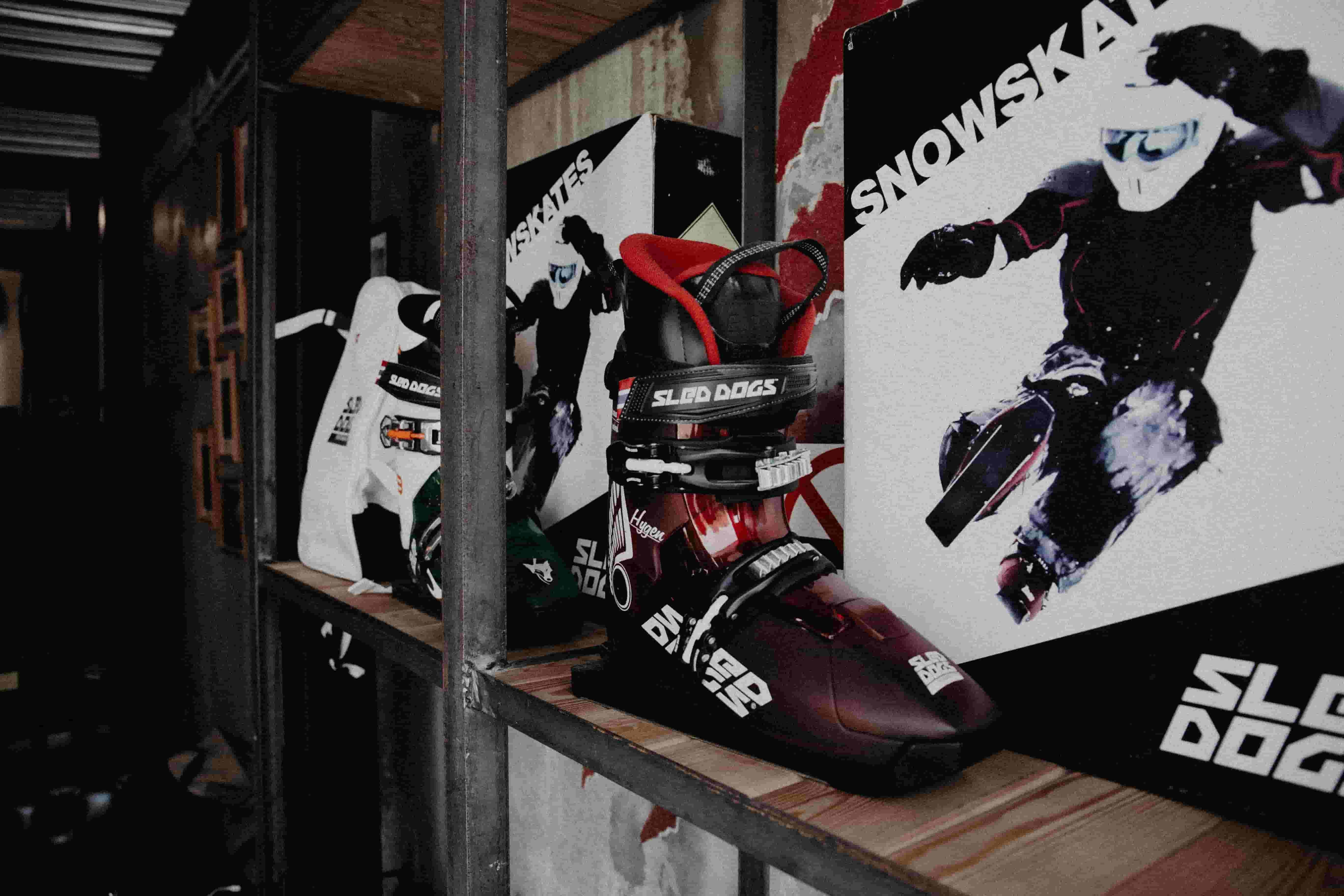Ski boots are the key link between your body and your skis, so finding boots well-matched to the size and shape of your feet is a high priority. (Click here to see all Northern Michigan Ski Lifestyle Homes for Sale)

- Ski boot construction consists of a hard outer shell for support and soft liner for cushioning and warmth. Most adult boots are "front-entry overlap" designs, meaning that they open in the front like hiking boots and are secured by three or four buckles. Some kids' boots are "rear-entry" style. These models open in the back, which makes them more comfortable and user-friendly for beginners.
- Focus on fit and performance as a way to narrow your search—style and color are secondary considerations. If at all possible, have yourself professionally fit by a ski boot specialist or another qualified person. (Click here to see Northern Michigan's finest collection of ski-in/ski-out vacation rentals)
Ski Boot Flex Index
Online specs include a flex rating, however, determining boot flexibility is largely a subjective evaluation by each brand. Not all "soft" boots, for instance, exhibit the same degree of softness. Accordingly, shopping for ski boots in a store has advantages over shopping online.
Ski boot manufacturers rate boots on a flex index: the higher the number, the stiffer the boot. The more rigid your boot, the more power transfers to your ski's inside edge.
When shopping for ski boots, the amount of flex the boots offer also roughly correlates to your ability level: beginner, intermediate or advanced.
Below is a general guideline for matching flex index to your ability level, but know that within each level you can still refine your range.
Soft flex
Flex index is typically below 85 for men and 75 for women.
Soft-flexing boots are usually comfortable and warm. They’re typically best if you're new to the sport or you've been at it for a while but enjoy skiing leisurely on groomed green and blue runs. A soft flex does make it a bit harder to control the ski; go a step up if you expect to progress quickly.
Medium flex
Flex index ranges from about 90 -110 for men and 80 - 95 for women.
Medium-flex boots are geared to intermediate skiers and deliver increased responsiveness for improved turn-carving skills and higher speeds. They're ideal for those who can comfortably ski blues and easier black runs and are ready to tackle steeper terrain, moguls and ungroomed snow.
Stiff flex
Flex index is typically above 115 for men and above 100 for women.
Stiff-flex boots are highly responsive and designed for those who ski with confidence, speed and aggressiveness on the steepest and most challenging terrain. Some boots offer features such as shock absorption for landing jumps or slamming bumps. Most advanced-level boots combine multi-density materials to make boots stiff in critical areas of energy transfer, but soft in other areas. Very stiff racing boots can be uncomfortably rigid for general use.
Note: Flex index ratings are comparable only within a manufacturer's line, so the best way to compare when shopping is to put a boot on each foot, lean forward and flex them. Be aware that boots will have a softer flex at a warm indoor temperature than they will out on the ski hill.
Ski Boot Sizing
Mondo Sizing: Downhill ski boots use mondo sizing, which refers to the boot’s inner sole length in centimeters. Sizes are not always uniform by brand or even from one model to another, but here is a general guide to get you started:
Mondo Ski Boot Sizes to US Sizes
|
Mondo |
21.5 |
22 |
22.5 |
23 |
23.5 |
24 |
24.5 |
25 |
25.5 |
26 |
|||||||||
|
Women's U.S. |
5 |
5.5 |
6 |
6.5 |
7 |
7.5 |
8 |
8.5 |
9 |
9.5 |
|||||||||
|
Men's U.S. |
NA |
NA |
NA |
5 |
5.5 |
6 |
6.5 |
7 |
7.5 |
8 |
|||||||||
|
Mondo |
26.5 |
27 |
27.5 |
28 |
28.5 |
29 |
29.5 |
30 |
30.5 |
||||||||||
|
Women's U.S. |
10 |
10.5 |
11 |
11.5 |
12 |
NA |
NA |
NA |
NA |
||||||||||
|
Men's U.S. |
8.5 |
9 |
9.5 |
10 |
10.5 |
11 |
11.5 |
12 |
13 |
||||||||||
Last width: The width of the inside of the ski boot at the ball of the foot is called last width (also sometimes referred to as footbed width) and ranges from 97mm to 106mm. A tighter fit is more responsive for higher performance.
Ski Boot Liners
Most boots come with some amount of heat-moldable material in the liners. Typically, more expensive boots will feature more heat-moldable material. Some liners have down-filled toe boxes for added warmth.
There are several liner types to choose from:
- Non-moldable: Less pliable than other options, non-moldable liners provide generic padding and stability for your feet. Over time the sustained pressure of your body weight will likely cause the liner's forefoot section to conform to that section of your foot's shape.
- Thermoformable foam liners use your foot’s heat to achieve a custom fit. They break in after a day or so of skiing.
- Custom moldable liners use an artificial heat source to achieve a custom fit. Though best done at ski shops with boot-fitting expertise, it is possible to mold liners at home.
Additional Ski Boot Features
- Ski/Walk Mode: Do your ski days include hikes up side-country ridges to find untracked powder? Many medium- to high-end boots let you separate the upper shell from the lower boot for more comfortable walking. When you're ready to ski the descent, you can lock the upper and lower shell together to maximize power transmission.
- Flex Adjustment: Some ski boots have a switch so you can adjust the boots' stiffness to match a particular type of skiing, like powder, groomers or bumps. It is usually located on the back of the boot, around ankle height.
Ready to invest in Northern Michigan real estate? Register today with Brook Walsh Home Search. For more Northern Michigan real estate info, contact Brook Walsh today!
Posted by Brook Walsh on

Leave A Comment